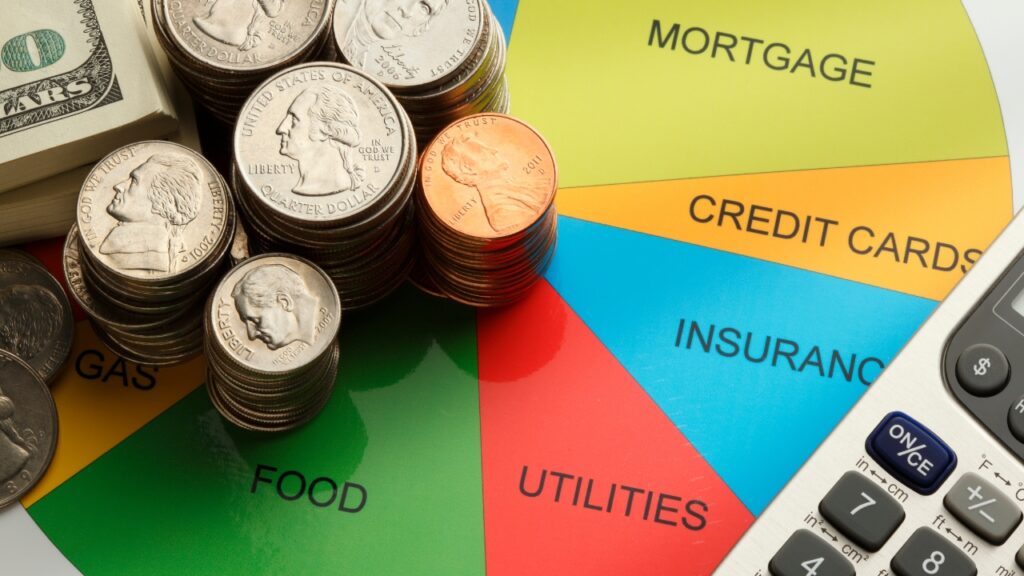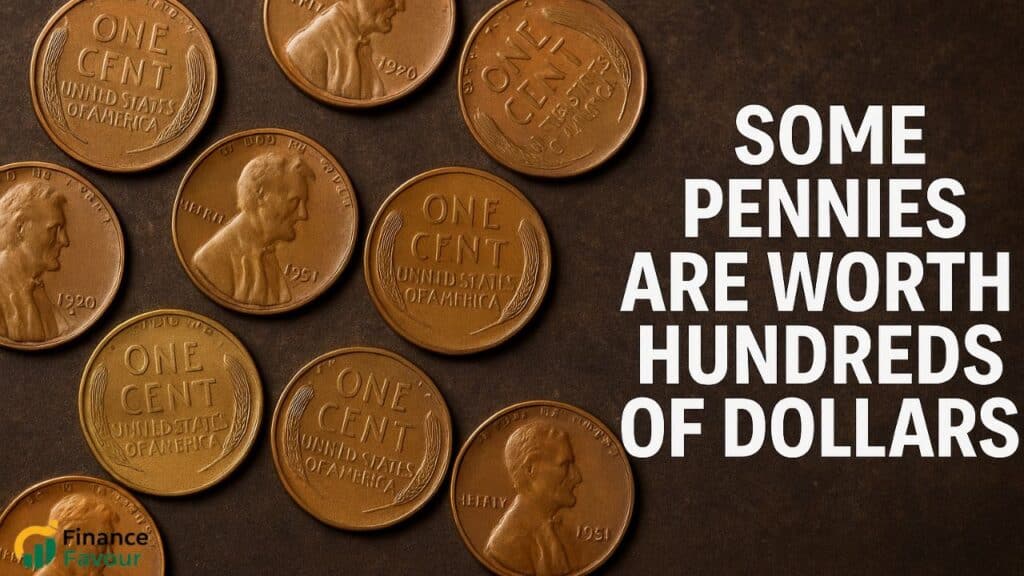Lowering your monthly bills isn’t just a budgeting hack it’s a lifestyle shift that leads to long-term financial freedom. If your bank balance seems to vanish faster than you can say “payday,” it’s time to hit pause, take a deep breath, and get serious about your spending. Whether you’re drowning in bills or simply looking to save more, this guide walks you through everything you need to cut costs and reclaim control of your finances. Let’s break it down, one step at a time.
Understanding Your Monthly Expenses
What Are Monthly Bills?
Monthly bills are those pesky recurring charges that quietly chip away at your paycheck. They include rent or mortgage, utilities, groceries, insurance, subscriptions, phone, internet, transportation, and debt repayments. While these may seem fixed, the truth is, many of them are flexible with a little strategy. Recognizing what you’re spending on and whether it’s worth it is the first step toward saving.
Think of your expenses as two categories: fixed and variable. Fixed expenses (like rent) are consistent each month. Variable expenses (like groceries or gas) fluctuate. Understanding this breakdown helps identify where you can cut back.
Take a week to log every expense yes, even that $5 coffee. Apps like Mint or YNAB can do the heavy lifting for you. Once you have the full picture, you’ll likely be surprised by how much of your income disappears on things you don’t need.
Why Tracking Expenses Is Crucial
Tracking your expenses is like turning on the lights in a dark room you can’t fix what you can’t see. It gives you a realistic view of where your money goes and helps highlight problem areas. Are you spending too much on dining out? Subscribed to services you barely use? That daily latte costing $5 doesn’t seem like much until you realize it adds up to $150 per month.
Start with a spending journal or an app. Some top picks are PocketGuard, Goodbudget, and EveryDollar. Review your bank and credit card statements from the last three months to find patterns. Highlight non-essential expenses and mark them as areas to cut back.
Once you’ve identified leaks in your budget, you can plug them and start building financial discipline. This foundational step sets the tone for every money-saving move that follows.
Creating a Monthly Budget
How to Set Realistic Budget Goals
Budgeting is your blueprint to financial success. Without it, your money is like a ship without a compass adrift and heading nowhere. To build a budget that works, you need to be honest with yourself. Start by listing your total monthly income (after taxes) and all your expenses. Subtract the latter from the former. If you’re in the red, you’re spending more than you earn and that’s a wake-up call.
Use the 50/30/20 rule as a guideline:
- 50% for needs (rent, groceries, utilities)
- 30% for wants (entertainment, dining)
- 20% for savings and debt repayment
Your goal should be to spend less than you earn simple as that. Set mini goals like “cut grocery spending by $100” or “save $200 a month.” These manageable goals will give you quick wins and build momentum. Remember, budgeting isn’t about restriction; it’s about intention.
Budgeting Tools and Apps You Can Use
Thankfully, you don’t need to manage your budget on napkins or Excel sheets anymore. There are apps that turn budgeting into an intuitive, even enjoyable process.
Here are a few top choices:
- Mint – Free, easy to use, syncs with your bank accounts.
- You Need A Budget (YNAB) – Focuses on giving every dollar a job; great for building long-term habits.
- PocketGuard – Shows how much disposable income you have after bills and essentials.
- Goodbudget – Based on the envelope method, ideal for cash-based budgeting.
Each of these apps lets you categorize your spending, set savings goals, and track progress. The best part? You can access your finances anytime, anywhere. Automate reminders, set limits for each category, and stay in the know—no more surprises when the bills arrive.
Reducing Utility Costs
Saving on Electricity
Electricity bills can be sneaky budget busters, but the good news? They’re one of the easiest to reduce. First, ditch old appliances. That ancient fridge in your garage? It’s probably guzzling power. Upgrading to energy-efficient models might seem expensive, but they pay for themselves in savings.
Switch to LED bulbs they use 75% less energy and last 25 times longer. Unplug electronics when not in use. Yes, your TV, laptop charger, and gaming console still draw power when turned off this is called phantom energy. Use power strips and flip them off when not in use.
Set your thermostat wisely. In summer, keep it at 78°F; in winter, 68°F. Each degree can save you up to 3% on your bill. Don’t forget about insulation drafty windows and doors make your HVAC work harder. Weatherstrip them or use thermal curtains to reduce waste.
Also, check if your provider offers off-peak pricing. Running appliances like dishwashers and washing machines during these times can reduce your rate.
Cutting the Cost of Food
Meal Planning and Grocery Shopping Hacks
Eating is non-negotiable but overspending at the grocery store? That’s entirely preventable. Meal planning is the ultimate food-budget ninja move. It helps you avoid spontaneous (and often expensive) food decisions and minimizes waste. Start by planning your meals for the week. Look at what you already have in your pantry and build meals around those items. Then make a precise grocery list and stick to it.
Shop with a full stomach. Sounds silly? It works. Hungry shoppers buy more junk. Avoid convenience foods those pre-packaged meals and chopped fruits are massively marked up. Buy whole foods, especially in bulk. Items like rice, beans, pasta, and oats are budget-friendly and last forever.
Consider store brands they’re often made in the same factories as name-brand products but cost significantly less. Use loyalty cards, clip digital coupons, and try rebate apps like Ibotta and Rakuten. You can also subscribe to store newsletters for exclusive deals.
Lastly, don’t shop multiple times a week. Each trip increases your chances of impulse buys. A single, well-planned weekly trip keeps your spending in check and your meals organized.
Reducing Takeout and Dining Expenses
Ordering takeout may feel like a reward, but your wallet definitely doesn’t see it that way. Dining out often eats away at your budget faster than you’d think. The cost of a single restaurant meal can cover the ingredients for three home-cooked dinners. So how do you break the habit?
Start by limiting dining out to special occasions. Designate a “dining out” budget each month and stick to it. If you’re a frequent delivery app user, consider deleting the apps or at least disabling push notifications.
Instead, make dining at home an experience. Try new recipes, host dinner nights, or prep freezer meals that are just as convenient as takeout. And when you do eat out, be smart about it. Look for happy hour deals, split entrees, or order from the lunch menu for smaller portions at lower prices.
Cooking more doesn’t mean you need to become a chef. There are tons of five-ingredient recipes and 30-minute meals that are healthier, tastier, and way cheaper than delivery.
Lowering Transportation Expenses
How to Save on Gas and Car Maintenance
Gas prices have become as unpredictable as the weather, but your car-related expenses don’t have to be. Start by driving smarter. Aggressive driving (speeding, rapid acceleration) can lower your gas mileage by up to 30% on the highway. Use cruise control when possible and keep your tires properly inflated both help improve fuel efficiency.
Plan your errands in batches to reduce mileage. Use apps like GasBuddy to find the cheapest fuel stations in your area. Avoid premium gas unless your car specifically requires it it’s a common myth that it improves performance in regular engines.
For maintenance, follow your vehicle’s manual. Don’t fall for every upsell at oil change stations. Many services like air filter replacements and battery checks can be done yourself with YouTube tutorials. Use discount codes for service centers and check if your employer or insurance offers car maintenance discounts.
And here’s a big one: reassess your car insurance. Rates vary wildly, so shop around at least once a year. Combining safe driving habits with policy discounts can save hundreds.
Exploring Public Transit and Carpool Options
Owning a car is convenient, but it comes with hefty expenses—gas, maintenance, insurance, parking, and more. If you’re in an urban area with decent transit, ditching the car can lead to massive savings. Monthly transit passes are usually cheaper than a week’s worth of gas.
Even using public transportation a few days a week can trim your budget. Apps like Citymapper and Transit make route planning easier than ever. Don’t overlook biking or walking great for your wallet and your waistline.
Carpooling is another budget-friendly option. Use apps like Waze Carpool or check local Facebook groups to find commuting buddies. Many employers even have ride-share programs. Sharing the ride cuts gas costs, reduces vehicle wear and tear, and bonus helps the environment.
For those who only drive occasionally, services like Zipcar or car-sharing programs may be more cost-effective than owning a vehicle.
Managing Housing Costs
Renting vs. Owning: What’s More Cost-Effective?
The age-old question: should you rent or buy? The answer isn’t one-size-fits-all—it depends on your income, lifestyle, and long-term plans. Renting offers flexibility and fewer maintenance responsibilities, while homeownership can build equity and offer tax benefits.
Let’s break it down:
Renting Pros:
- No property taxes or maintenance costs
- Easier relocation
- Lower upfront costs (security deposit vs. down payment)
Owning Pros:
- Builds equity over time
- You can customize your space
- May be cheaper long-term in stable markets
However, owning also means hidden costs repairs, insurance, HOA fees, and property taxes. If your mortgage, utilities, and upkeep exceed 30% of your income, it might strain your budget. Renting in a low-cost area or getting roommates could be smarter financially.
Use a rent vs. buy calculator to crunch the numbers based on your location, income, and how long you plan to stay. Sometimes, the best decision isn’t about dollars it’s about stability and peace of mind.
Negotiating Rent or Refinancing a Mortgage
When it comes to housing costs, most people think they’re stuck with what they have—but the truth is, there’s often room to negotiate. If you’re renting, don’t assume your rent increase is set in stone. Approach your landlord with data: show comparable prices for similar units in your area, highlight your on-time payment history, and mention any maintenance tasks you’ve handled yourself. Landlords would often rather keep a good tenant than find a new one.
If you’re a homeowner, refinancing your mortgage can lead to big monthly savings. Lower interest rates can reduce your monthly payments by hundreds. Shop around and compare quotes from different lenders. You can also consider switching from a 30-year to a 15-year mortgage if your budget allows this could save you tens of thousands in interest over time.
And don’t forget property taxes file for homestead exemptions or challenge your assessment if it seems high. Every little bit counts when it comes to lowering the roof over your head.
Slashing Subscription and Membership Fees
Identifying Unused or Overlapping Subscriptions
Subscriptions are silent budget killers. One here, another there it doesn’t feel like much until you realize you’re paying $200 a month for things you barely use. Gym memberships, streaming services, meal kits, music platforms, cloud storage it all adds up.
Start by checking your bank and credit card statements for recurring charges. Use apps like Truebill (now Rocket Money) or Trim to help identify and cancel unused subscriptions automatically. Be honest with yourself: if you haven’t used it in the last month, it’s probably not worth it.
Also, look for redundancy. Do you really need Netflix, Hulu, Disney+, AND HBO Max? Choose one or two that you actually watch regularly and pause the rest. Many platforms let you resume your account without losing your preferences or data.
Same goes for services like cloud storage or digital productivity tools. If your iCloud, Dropbox, and Google Drive are all backing up the same files, consolidate and stick with the best value option.
How to Find Better Deals or Free Alternatives
You don’t have to give up your favorite content or tools just find smarter, cheaper ways to access them. Many paid services have free tiers or ad-supported versions that provide similar value. For example, Spotify has a free plan, and so do apps like Canva, Evernote, and Grammarly.
When it comes to streaming, consider rotating services. Subscribe to one for a month, binge what you like, then cancel and switch to another. Also, split plans with family or friends where possible just make sure it’s allowed by the provider’s terms.
Don’t be shy about asking for discounts. Reach out to customer service and say, “I’m thinking of canceling do you have any promotions?” You’d be surprised how often they’ll offer a deal to keep you on board. Annual plans are often cheaper than monthly ones just be sure you’ll use it for the full year.
And remember: the library is your best friend. Free books, movies, audiobooks, even software all available with a simple card.
Cutting Insurance Premiums
Shopping Around for Better Rates
Insurance is a must but overpaying for it isn’t. Whether it’s health, auto, renters, or homeowners insurance, shopping around can save you hundreds (even thousands) every year. Most people stick with their current provider out of convenience, but loyalty doesn’t always pay.
Set a reminder to review your policies annually. Use comparison tools like The Zebra or Policygenius to get quotes from multiple providers. Look beyond the monthly premium check deductibles, coverage limits, and exclusions. A slightly higher deductible can lead to a significantly lower premium if you can afford it.
Also, review your coverage. You may be paying for extras you don’t need, like roadside assistance or rental coverage if you rarely travel. Tailor your policy to fit your actual needs.
Some insurers also offer discounts for safe driving, good grades (for students), or bundling multiple policies. If your record is clean or your credit score has improved, use it to negotiate a better rate.
Bundling Policies for Maximum Savings
Bundling is the insurance industry’s way of saying “buy more, pay less.” If you have separate policies say, auto and renters or homeowners combine them under one provider. Most companies offer 10% to 25% discounts for bundling.
Beyond saving money, bundling simplifies your life. One provider, one bill, one renewal date. You also gain leverage providers are more likely to offer perks or waive fees to keep a multi-policy customer.
However, bundling isn’t always cheaper. Don’t assume it’s the best deal compare it with separate quotes to confirm. And even if you’re already bundled, don’t be afraid to switch. Just make sure there’s no coverage gap and that you understand any cancellation fees.
Insurance is one of those “set it and forget it” expenses that quietly eats up your budget. A little effort once a year can lead to big long-term savings.
Lowering Debt Payments
Consolidating or Refinancing Loans
Debt can feel like a giant anchor dragging your finances down, but there are ways to lighten the load. Loan consolidation and refinancing are two powerful strategies. Consolidation combines multiple debts like credit cards, personal loans, or medical bills into one monthly payment, often with a lower interest rate. It simplifies your life and can reduce the overall interest you’re paying.
Refinancing works similarly but usually applies to bigger loans like student loans or mortgages. If your credit score has improved or interest rates have dropped since you first borrowed, refinancing could lead to significantly lower payments.
Make sure you do the math. Use a loan calculator to compare your current repayment plan with the new terms. Watch out for fees, prepayment penalties, or loss of borrower benefits like federal loan protections.
Whether you consolidate or refinance, the goal is the same: reduce the cost of your debt and free up more money each month.
Tips for Paying Off Credit Card Debt Efficiently
Credit card debt is brutal. High interest rates mean even small balances can balloon quickly. But there’s hope and strategy is key.
First, stop adding to the debt. Commit to using cash or debit until you’re in the clear. Then choose your repayment method: the avalanche method (pay off the highest interest rate first) saves more money, while the snowball method (pay the smallest debt first) offers quicker wins and motivation.
Always pay more than the minimum. Even an extra $50 a month can shave years off your debt timeline. Set up autopay to avoid late fees and ask your card issuer for a lower interest rate surprisingly, they often agree.
Consider a 0% balance transfer card if you qualify. It lets you move your debt and pay it off interest-free for a set period (usually 12–18 months). Just watch for transfer fees and make sure you pay it off before the promo ends.
Remember: paying off credit card debt isn’t just about saving money it’s about buying your freedom back.
Smart Shopping and Spending Habits
Using Coupons, Cashback, and Reward Programs
Couponing isn’t just for your grandma anymore. With a few smart moves, you can save hundreds a year on everything from groceries to gadgets.
Start with digital coupons most stores have apps that offer instant savings. Use browser extensions like Honey or Rakuten to automatically find and apply coupon codes at checkout. For in-store shopping, apps like Ibotta or Fetch Rewards let you scan receipts and earn cashback.
Next, take advantage of reward programs. Most major retailers offer loyalty points, cash-back perks, or exclusive discounts to members. Even your credit cards can earn you rewards just be sure you’re not spending more than you can afford just to earn points.
Buy in bulk for staples and non-perishables. Just be careful more isn’t always cheaper if it leads to waste. Combine sales with coupons for maximum savings, and don’t forget about cashback websites for booking travel, dining, or online shopping.
A dollar saved is truly a dollar earned, especially when it comes to daily spending.
Waiting for Sales and Buying in Bulk
Impulse buying is the enemy of smart finances. Instead, practice the 30-day rule: if you want something non-essential, wait 30 days. If you still want it—and can afford it go ahead. Chances are, you won’t.
Plan your purchases around sales cycles. Big-ticket items like electronics, appliances, and furniture usually go on sale during specific times of the year (think Black Friday, Memorial Day, or end-of-season clearances). Bookmark those dates and plan ahead.
Buying in bulk also saves money, but only if done wisely. Stick to items you use regularly rice, beans, toilet paper, detergent. Avoid perishables unless you can freeze or use them quickly. Bulk buying works best when paired with airtight storage to avoid spoilage.
Use warehouse stores like Costco or Sam’s Club, or even Amazon Subscribe & Save for recurring purchases. Remember: it’s only a deal if you were going to buy it anyway.
Entertainment on a Budget
Free or Low-Cost Entertainment Ideas
Fun doesn’t have to be expensive. In fact, the best things in life really can be free or close to it. Local libraries are a treasure trove of free books, movies, eBooks, and even online courses. Parks, hiking trails, and community events offer free ways to get out and enjoy yourself.
Look for free museum days, festivals, outdoor concerts, or open mic nights. Explore hobbies that require little to no investment writing, painting, DIY crafts, gardening, or learning a new instrument through free online tutorials.
Game nights, potluck dinners, or movie marathons at home can replace expensive nights out. If you’re a sports fan, try watching games with friends rather than going to the stadium. Share subscriptions with family to split costs.
Use websites like Meetup to find free events or join groups with shared interests. Entertainment should recharge you not drain your wallet.
Canceling Cable and Using Streaming Alternatives
Cable TV is becoming a dinosaur an expensive one. With so many affordable streaming alternatives, cutting the cord is a no-brainer. Services like Netflix, Hulu, Disney+, Amazon Prime, and YouTube TV offer diverse content for a fraction of the price.
If you’re still clinging to cable, do the math. You’re probably paying $100+ a month for hundreds of channels you don’t watch. Replace it with two or three streaming platforms tailored to your preferences and save $50–$80 monthly.
Use free options like Pluto TV, Tubi, or Peacock for even more content. Many local news channels now stream online for free as well.
Don’t forget to rotate subscriptions. Subscribe to one or two, binge the shows you want, cancel, and switch to others the next month. Many platforms also offer student or family discounts use them.
Entertainment shouldn’t come with a cable-sized bill.
Financial Habits for Long-Term Success
Building an Emergency Fund
If budgeting is your financial shield, an emergency fund is your safety net. Life throws curveballs car repairs, job loss, medical bills. An emergency fund helps you handle these without racking up debt.
Start small. Aim for $500, then $1,000, and build from there until you have 3–6 months’ worth of living expenses. Keep the money in a separate, high-yield savings account accessible but not too easy to dip into.
Automate your savings. Set a fixed amount to transfer each payday. Even $10 a week adds up over time. Skip one takeout meal, stash that cash, and watch your safety net grow.
Having an emergency fund means peace of mind. It’s not just about preparing for the worst it’s about knowing you can handle whatever comes.
Investing in Financial Education
Knowledge is your most powerful money tool. The more you understand about personal finance, the better your decisions will be. And you don’t need a degree just curiosity and consistency.
Start with personal finance books like The Total Money Makeover by Dave Ramsey or Your Money or Your Life by Vicki Robin. Subscribe to podcasts, YouTube channels, or blogs focused on budgeting, investing, and saving.
Take advantage of free online courses from sites like Coursera, Khan Academy, or even your local library. Learn about budgeting, compound interest, investing basics, and retirement planning.
The more you know, the more confident you’ll feel managing your money. And confidence leads to better habits, smarter decisions, and long-term success.
Conclusion
Lowering your monthly bills isn’t just a one-time fix it’s a journey of intentional living and smart decisions. By taking control of your expenses, budgeting wisely, and developing solid financial habits, you’re setting the stage for a future where money stress takes a backseat to financial freedom.
Remember, small changes create big results. Whether it’s meal planning, refinancing, cutting subscriptions, or just tracking your spending every dollar saved brings you one step closer to your goals. So, start today. Your future self will thank you.
Check this post Quit Alcohol, Save Thousands
FAQs
Start by tracking all your expenses. Identify non-essentials and begin cutting back on them. Create a realistic budget and follow it consistently.
You can often see immediate savings in categories like dining out, subscriptions, and utilities within the first month.
Yes, they automate tracking, help set goals, and give you a clear picture of where your money goes making budgeting simpler and more effective.
Call your provider, mention competitor offers, and ask if they can match or reduce your rate. Many companies have retention deals if you ask.
Absolutely. Saving $5 here and $10 there adds up. Over time, consistent small savings can lead to major financial improvements.




